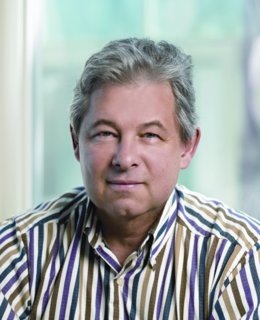
Dr. Derrick Emile Rancourt
Positions
Professor
Cumming School of Medicine, Department of Oncology
Professor
Cumming School of Medicine, Department of Medical Genetics
Professor
Comparative Biology & Experimental Medicine
Director
Centre for Genome Engineering
Full Member
Arnie Charbonneau Cancer Institute
Child Health & Wellness Researcher
Alberta Children's Hospital Research Institute
Full Member
McCaig Institute for Bone and Joint Health
Full Member
Cumming School of Medicine, Office of Health and Medical Education Scholarship
Contact information
Phone number
Office: 403.220.2888
Lab: 403.220.2887
Location
Office: HMRB436C
Preferred method of communication
Admin Assistant
Benedicta Odame-Ankrah
Email: b.odameankrah@ucalgary.ca
Office: 403.220.3029
Background
Biography
Dr. Derrick Rancourt is a Professor in the Depts. of Oncology, Biochemistry & Molecular Biology and Medical Genetics, University of Calgary. He received his BSc and PhD in Biochemistry from the University of Guelph and Queens University respectively and postdoc’d in the laboratory of Nobel Laureate Dr. Mario Capecchi. He is the Director of the University of Calgary’s Centre for Mouse Genomics, which specializes in the generation of transgenic and knockout mice.
Research
Areas of Research
- Pluripotent Stem Cells
- Molecular and Development Genetics
Derrick Rancourt’s research program revolves around the derivation, expansion, differentiation and genetic manipulation of mouse and human pluripotent stem cells, including embryonic stem cells and induced pluripotent stem cells. Over the past several years he has been developing bioprocesses for generating bone and cartilage tissue from stem cells for transplantation. An important feature of the research is the development of methods for expanding and differentiating murine and human pluripotent stem cells in stirred suspension bioreactors.
1) Pluripotent Stem Cells.
We are developing methods for expanding mouse and human pluripotent stem cells (i.e. embryonic stem cells (ESCs) and induced pluripotent stem cells (iPSCs) as aggregates in stirred suspension bioreactors. Bioreactors offer numerous advantages over conventional static culture systems, which lack control and have low cell yields. Bioreactors can be controlled; physiological levels of key parameters can be maintained, and large amounts of cells/tissue can be grown in a short time. Human intervention is minimized, so there is little batch variability. This makes bioreactors an essential step in the application of stem cells. Having demonstrated that the quality of bioreactor expanded cells was equal if not superior to conventional static expansion methods we next explored our ability to differentiate mouse ESCs into different tissue types in the bioreactor. In sharp contrast to static culture, where cell differentiation occurred efficiently, we observed that many cells remained pluripotent in the suspension culture environment and causing them to be refractory to tissue differentiation. Using the mouse model system, we recently demonstrated that in the bioreactor iPSCs form 1000-fold more efficiently, and in half-time compared to static culture. The method is so efficient that we have begun to remove genes from the reprogramming process. Our current research is investigating how fluid shear promotes cellular reprogramming via mechanotransduction.
2) Osteoblast and Chondrocyte Differentiation.
We are developing new methods for differentiating mouse and human pluripotent stem cells (PSCs) into osteoblasts and chondrocytes and transplanting them into animal injury models. When cells are affixed to the bottom of micro-drop cultures and treated directly with differentiation factors, some cells undergo apoptosis while others form small chondrocyte or osteoblast fated aggregates in suspension. We have also developed methods to differentiate ESCs within collagen gels. These constructs are sufficient to induce osteoblast formation in the absence of any growth factors: ESCs are simply removed from pluripotency maintenance factors, suspended in collagen gels and cultured for 15 days whereupon they form osteoblasts or chondrocytes in vitro. We have developed a mouse burr-hole fracture model in the proximal tibia, one that is stable and has a known geometry. Osteoblast differentiations derived of male PSCs incorporate into female bone based on Y-chromosome in situ hybridization histochemistry, uCT, and magnetic resonance imaging. Cartilage differentiations are able to form bone when transplanted into animals via a process resembling endochondral ossification.
Participation in university strategic initiatives
Publications
More Information
Research Personnel:
- Summer Helmi, Ph.D. Graduate Student
- Leila Larijani, Ph.D Graduate Student
- Lane Harper, MSc Graduate Student
- Yaping Yu, Lab Technician
- Teresa Scheidl-Yee, Lab Technician
- Shiying Liu, Lab Technician
- Dr. Ken Ito, Ph.D., Research Associate
- Benedicta Odame-Ankrah, Administrative Assistant
Are you the profile owner?
Login to edit.
